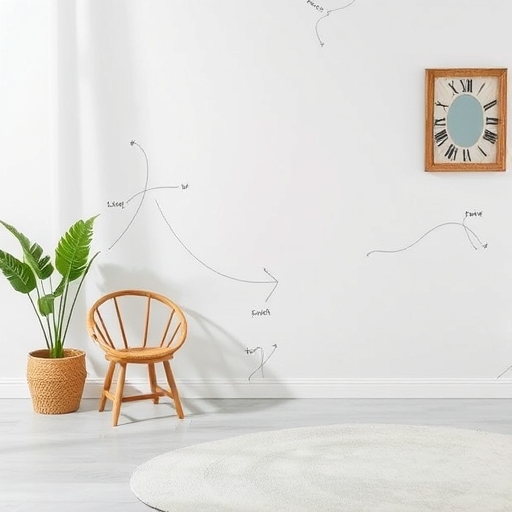Can You Paint Linoleum? A Comprehensive Guide
Linoleum flooring has been a popular choice for homes and businesses for decades due to its durability, affordability, and eco-friendliness. However, over time, linoleum may become worn, outdated, or simply not match your interior design. If you’re considering a budget-friendly way to refresh your space, you might be wondering: can you paint linoleum? The answer is yes, but there are several factors to consider before you grab that paintbrush. In this article, we’ll explore the ins and outs of painting linoleum, including preparation, materials, techniques, and maintenance.
Understanding Linoleum
What is Linoleum?
Linoleum is a type of resilient flooring made from natural materials like linseed oil, cork dust, wood flour, and minerals. It’s often confused with vinyl flooring, but linoleum is biodegradable and has a different composition.
Benefits of Linoleum
- Eco-friendly: Made from renewable resources, linoleum is a sustainable flooring option.
- Durability: It can last over 40 years with proper care.
- Variety: Available in a wide range of colors and patterns.
- Easy Maintenance: Simple to clean with regular sweeping and mopping.
- Susceptible to Scratches: While durable, it can be scratched or damaged by heavy furniture.
- Color Fading: Exposure to sunlight can cause colors to fade over time.
- Water Damage: Prolonged exposure to water can damage seams and edges.
- Cost-Effective: Painting is usually cheaper than replacing the flooring.
- Customization: You can choose any color or pattern to suit your decor.
- Quick Update: Painting can be a relatively quick process compared to installing new flooring.
- Sweep and Vacuum: Remove dirt and debris.
- Mop: Use a mild detergent to clean any grime or stains.
- Rinse: Ensure no soap residue remains.
- Fill Scratches and Dents: Use a suitable filler to repair any damage.
- Sand the Surface: Lightly sand the linoleum to create a texture for better paint adhesion.
- Type of Paint: Use a high-quality acrylic or latex paint specifically designed for floors.
- Primer: A primer is essential for adhesion. Look for one that is compatible with your paint choice.
- High-density foam roller
- Paintbrush for edges
- Painter’s tape
- Drop cloths
- Paint tray
- Sandpaper (fine-grit)
- Use painter’s tape to protect walls, baseboards, and any areas you don’t want to paint.
- Apply Primer: Use a foam roller to apply a thin, even layer of primer.
- Drying Time: Allow the primer to dry completely, following the manufacturer’s instructions.
- First Coat: Apply the first coat of paint using a foam roller. Use a brush for corners and edges.
- Drying Time: Let the first coat dry according to the manufacturer’s instructions.
- Second Coat: After the first coat is dry, apply a second coat for better coverage and durability.
- Remove Painter’s Tape: Carefully remove the tape while the paint is still slightly wet to avoid peeling.
- Seal the Paint: After the final coat has dried completely, consider applying a clear sealant for added protection.
- Sweep or Vacuum: Regularly remove dirt and debris to prevent scratching.
- Mop: Use a damp mop with a gentle cleaner. Avoid harsh chemicals that can damage the paint.
- Use furniture pads to prevent scratches and dents when moving furniture.
- Keep some leftover paint for quick touch-ups if any areas get damaged.
Limitations of Linoleum
Why Paint Linoleum?
Painting linoleum can breathe new life into your flooring without the expense of replacement. Here are some reasons you might choose to paint your linoleum:
Preparing to Paint Linoleum
Before diving into the painting process, proper preparation is crucial to ensure a successful outcome.
Step 1: Clean the Surface
Step 2: Repair Damage
Step 3: Choose the Right Paint
Not all paints are suitable for linoleum. Here’s what to look for:
Step 4: Gather Your Tools
You’ll need the following tools for the painting process:
The Painting Process
Once you’re prepared, it’s time to start painting your linoleum flooring.
Step 1: Apply Painter’s Tape
Step 2: Prime the Linoleum
Step 3: Paint the Linoleum
Step 4: Finishing Touches
Maintenance After Painting
Proper maintenance will ensure your painted linoleum lasts longer.
Regular Cleaning
Avoid Heavy Furniture
Touch-Ups
Comparison Table: Painting vs. Replacing Linoleum
| Aspect | Painting Linoleum | Replacing Linoleum |
|---|---|---|
| Cost | Low (materials only) | High (materials + labor) |
| Time | Quick (1-2 days) | Long (several days) |
| Customization | High (any color/pattern) | Limited to available flooring options |
| Durability | Moderate (depends on maintenance) | High (new linoleum can last decades) |
| Eco-Friendliness | Moderate (depends on paint used) | High (if using natural linoleum) |
FAQ
Can I paint over old linoleum?
Yes, you can paint over old linoleum, but it’s essential to clean and prepare the surface properly for the best results.
How long will painted linoleum last?
With proper care and maintenance, painted linoleum can last anywhere from 3 to 10 years, depending on the quality of the paint and the amount of foot traffic.
Do I need a special type of paint for linoleum?
Yes, you should use high-quality acrylic or latex paint designed for floors, along with a suitable primer.
Can I use a regular household cleaner on painted linoleum?
Avoid harsh chemicals and opt for a gentle cleaner to maintain the paint’s integrity.
Is it necessary to seal painted linoleum?
While not mandatory, applying a clear sealant can provide extra protection and enhance the longevity of your painted linoleum.
Conclusion
Painting linoleum is an excellent way to revitalize your flooring without breaking the bank. With the right preparation, materials, and maintenance, you can achieve a fresh look that enhances your space. Whether you opt for a bold new color or a subtle update, painting linoleum can be a rewarding DIY project that breathes new life into your home or business. Just remember to take your time, follow the steps carefully, and enjoy the transformation!

